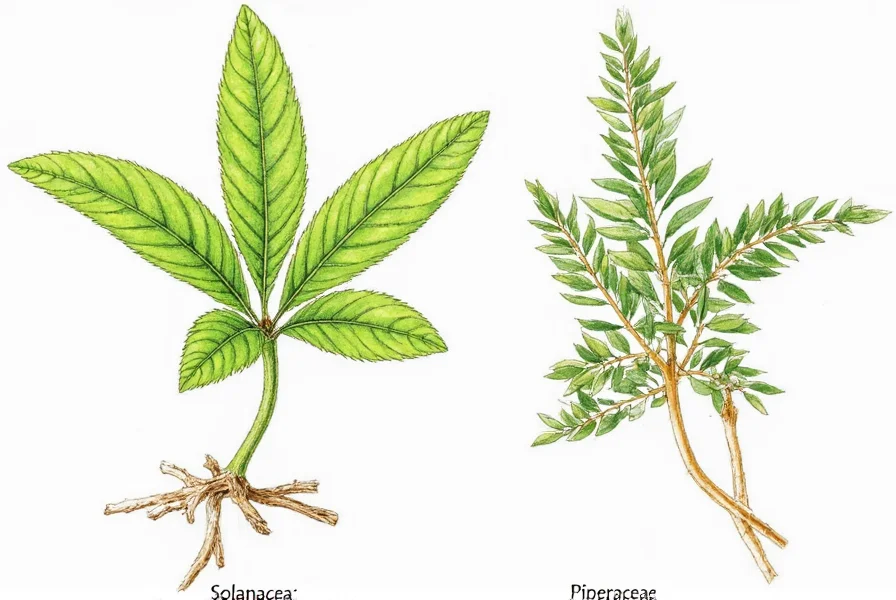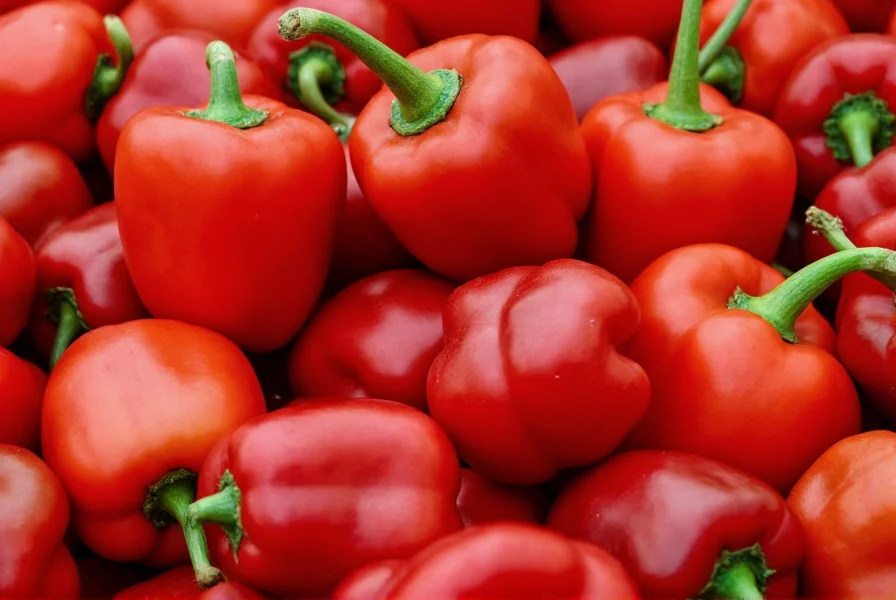Understanding the Botanical Confusion Around Pepper Plants
When gardeners and cooks refer to the \"pepper family,\" they're typically discussing plants in the Solanaceae family, commonly known as nightshades. This creates frequent confusion because black pepper—the kitchen staple found in nearly every dining room—actually belongs to an entirely different botanical family called Piperaceae. The shared \"pepper\" name stems from historical trade practices rather than botanical relationships, creating persistent misconceptions about these plants' classifications.
Understanding the botanical classification of pepper plants is essential for gardeners, chefs, and food enthusiasts who want to make informed decisions about cultivation, culinary uses, and nutritional benefits. The Solanaceae family contains over 2,700 species across 98 genera, with Capsicum being the genus that includes all chili peppers and bell peppers. Meanwhile, Piper nigrum, the source of black pepper, white pepper, and green pepper, stands alone in its family with no close relationship to the colorful peppers that populate our gardens and markets.
The Solanaceae Family: True Home of Culinary Peppers
The Solanaceae family, sometimes called the nightshade family, includes some of the world's most economically important plants. While it contains potentially toxic species like deadly nightshade (Atropa belladonna), it also gives us tomatoes, eggplants, potatoes, and of course, all varieties of chili peppers and sweet peppers. These plants share several key botanical characteristics:
- Flowers typically have five fused petals forming a bell or star shape
- Fruit structure is usually a berry (like tomatoes and peppers) or capsule
- Presence of alkaloids, including capsaicin in peppers
- Alternate leaf arrangement on stems
- Often contain glycoalkaloids as natural pest deterrents
Within Solanaceae, the genus Capsicum contains approximately 30 species, with five being domesticated for human consumption: C. annuum (most common bell and chili peppers), C. frutescens (tabasco peppers), C. chinense (habaneros, Scotch bonnets), C. baccatum (aji peppers), and C. pubescens (rocoto peppers). Each species offers unique flavor profiles, heat levels, and growing requirements that make them valuable additions to gardens and cuisines worldwide.

The Piperaceae Family: Home of Black Pepper
Unlike the colorful peppers of the Solanaceae family, black pepper (Piper nigrum) belongs to the Piperaceae family, which contains approximately 3,600 species across 14 genera. This tropical vine produces the peppercorns that, when processed differently, become black, white, or green pepper. The key compound responsible for black pepper's distinctive pungency is piperine, which creates a different sensation than the capsaicin found in chili peppers.
Black pepper vines require specific growing conditions—warm temperatures, high humidity, and partial shade—that explain why they're primarily cultivated in tropical regions like Vietnam, Indonesia, and India. The plant's growth habit as a climbing vine contrasts sharply with the bushy growth pattern of Solanaceae pepper plants, further highlighting their botanical differences. Understanding these distinctions helps gardeners determine which types of peppers they can successfully grow in their climate.
Comparing Major Pepper Types and Their Botanical Families
| Pepper Type | Botanical Family | Genus & Species | Heat Level (Scoville) | Primary Compound |
|---|---|---|---|---|
| Bell Peppers | Solanaceae | Capsicum annuum | 0 SHU | None (no capsaicin) |
| Jalapeño | Solanaceae | Capsicum annuum | 2,500-8,000 SHU | Capsaicin |
| Habanero | Solanaceae | Capsicum chinense | 100,000-350,000 SHU | Capsaicin |
| Black Pepper | Piperaceae | Piper nigrum | N/A | Piperine |
| Long Pepper | Piperaceae | Piper longum | N/A | Piperine |
| Sichuan Pepper | Rutaceae | Zanthoxylum spp. | N/A (tingling) | Hydroxy-alpha-sanshool |
Growing Peppers: Family-Specific Requirements
Successful cultivation of peppers requires understanding the specific needs of each botanical family. Solanaceae peppers generally prefer warm temperatures (70-85°F), full sun, and well-draining soil with a pH between 6.0-6.8. These plants are typically grown as annuals in temperate climates but can be perennials in tropical zones. Gardeners growing peppers in home gardens should rotate crops annually to prevent soil-borne diseases common to nightshades.
In contrast, black pepper requires a completely different environment—tropical conditions with temperatures between 75-85°F, high humidity (70-90%), and protection from direct sun. The vines need support structures to climb and produce fruit, making them impractical for most home gardeners outside tropical regions. This explains why black pepper remains an imported spice while chili peppers can be successfully grown in home gardens across diverse climates.

Nutritional Profiles and Culinary Applications
The nutritional benefits of peppers vary significantly between families. Solanaceae peppers, particularly colorful varieties, are excellent sources of vitamin C (often exceeding citrus fruits), vitamin A (as beta-carotene), and various antioxidants. The heat level in chili peppers correlates with capsaicin content, which has been studied for potential metabolic and pain-relief benefits. Bell peppers, lacking capsaicin, provide these nutrients without the burning sensation, making them versatile for various dietary needs.
Black pepper's piperine enhances the bioavailability of other nutrients, particularly curcumin in turmeric, making it valuable beyond its flavor contribution. Understanding these nutritional differences helps cooks and health-conscious consumers make informed choices about which peppers to incorporate into their diets for specific benefits. When exploring pepper plant varieties for cooking, consider both the flavor profile and potential health benefits each type offers.
Common Misconceptions Clarified
Several persistent myths surround the pepper family that deserve clarification. First, bell peppers are not \"sweet\" chili peppers—they lack capsaicin entirely due to a genetic mutation, placing them in a different category from even mild chili varieties. Second, the term \"pepper\" applied to black pepper resulted from European traders equating its pungency with that of chili peppers, despite no botanical relationship. Third, the Scoville heat scale applies only to capsaicin-containing peppers (Solanaceae), not to black pepper or other pungent spices.
Another frequent confusion involves Sichuan pepper, which belongs to the Rutaceae family (citrus family) and creates a unique tingling sensation rather than true heat. Understanding these distinctions helps cooks select appropriate substitutes when specific peppers aren't available and prevents culinary disappointments from using incompatible varieties.
Practical Applications for Gardeners and Cooks
For gardeners interested in growing peppers, selecting varieties appropriate for your climate is crucial. In temperate regions, focus on Solanaceae peppers like bell peppers, jalapeños, or cayenne, which adapt well to seasonal growing. Start seeds indoors 8-10 weeks before the last frost, and transplant after soil temperatures exceed 65°F. Remember that cross-pollination between different Capsicum species is rare, allowing you to grow multiple varieties without flavor contamination.
Cooks can leverage understanding pepper family characteristics to create balanced dishes. When substituting one pepper for another, consider both heat level and flavor profile—habaneros offer fruity notes beyond their heat, while cayenne provides straightforward spiciness. For non-heat pungency, experiment with black pepper's complex floral notes or Sichuan pepper's tingling sensation. Proper storage also varies: Solanaceae peppers last longer refrigerated, while black peppercorns maintain potency best in airtight containers away from light.
Frequently Asked Questions
Are bell peppers and chili peppers from the same plant family?
Yes, both bell peppers and chili peppers belong to the Solanaceae family (nightshade family) and the same genus (Capsicum). The difference in heat comes from a genetic mutation in bell peppers that prevents capsaicin production, the compound responsible for spiciness in chili peppers.
Why isn't black pepper related to chili peppers?
Black pepper comes from Piper nigrum, a tropical vine in the Piperaceae family, while chili peppers belong to the Solanaceae family. They evolved separately with different chemical compounds (piperine vs. capsaicin) creating their distinctive sensations. The shared name resulted from historical trade practices when European merchants compared black pepper's pungency to that of chili peppers.
Can I grow black pepper in my home garden?
Black pepper requires tropical conditions (75-85°F, 70-90% humidity) to thrive, making it impractical for most home gardens outside tropical regions. It grows as a climbing vine needing support structures, unlike the bushy growth of Solanaceae peppers. Gardeners in temperate climates should focus on growing chili peppers and bell peppers instead.
How do I substitute one pepper for another in recipes?
When substituting peppers, consider both heat level (Scoville units) and flavor profile. For example, serranos can replace jalapeños at half the quantity due to higher heat, while paprika offers similar flavor to bell peppers without heat. Remember that black pepper cannot substitute for chili peppers as they provide completely different sensations (piperine vs. capsaicin). Always taste as you adjust quantities.











 浙公网安备
33010002000092号
浙公网安备
33010002000092号 浙B2-20120091-4
浙B2-20120091-4